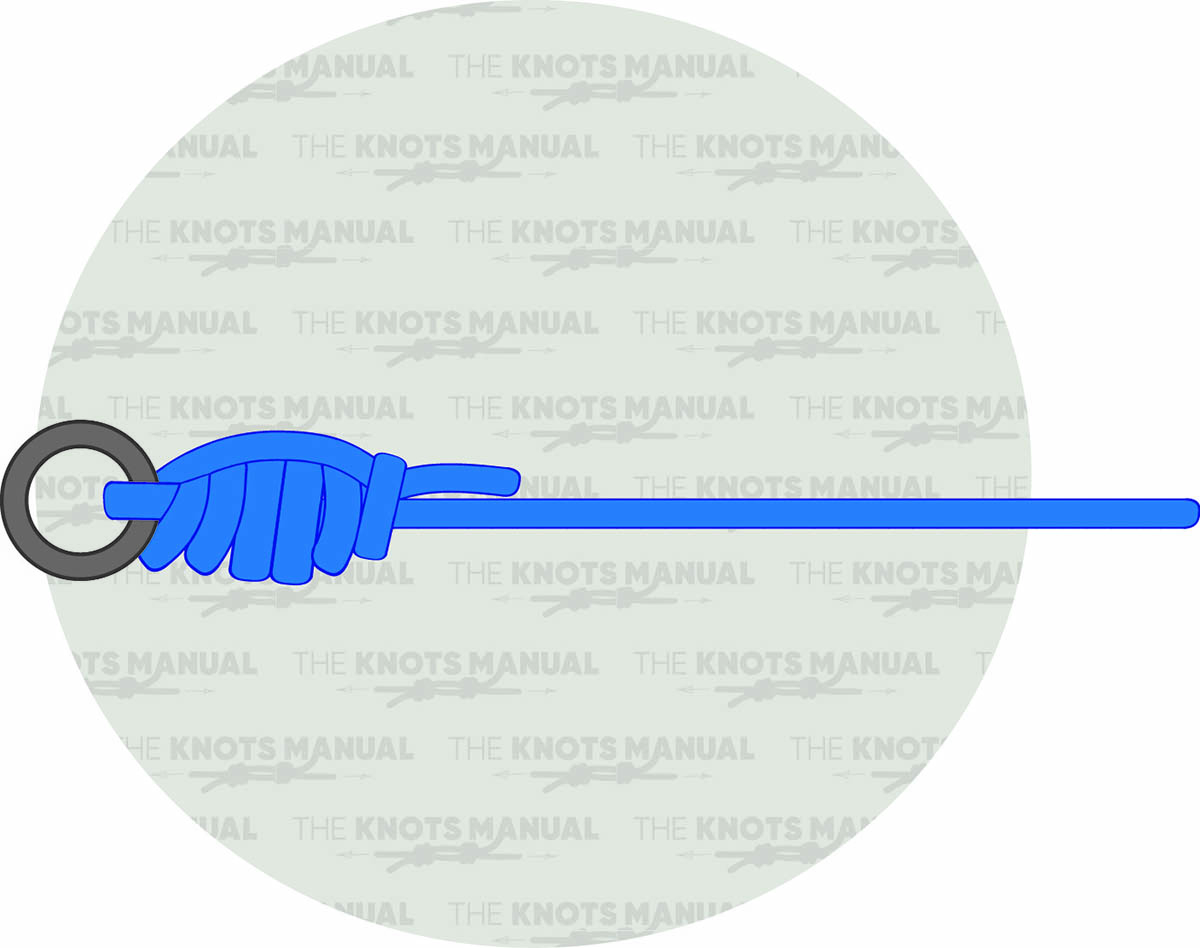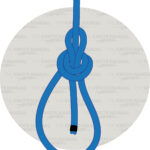Fishing knots are crucial for securing lines to hooks, lures, and other tackle components, ensuring a strong and reliable connection. Mastering these knots enhances your fishing experience by improving efficiency and increasing your chances of a successful catch. Whether you’re targeting freshwater or saltwater species, having a solid understanding of different fishing knots can help you land more fish.
1. Fisherman’s Knot
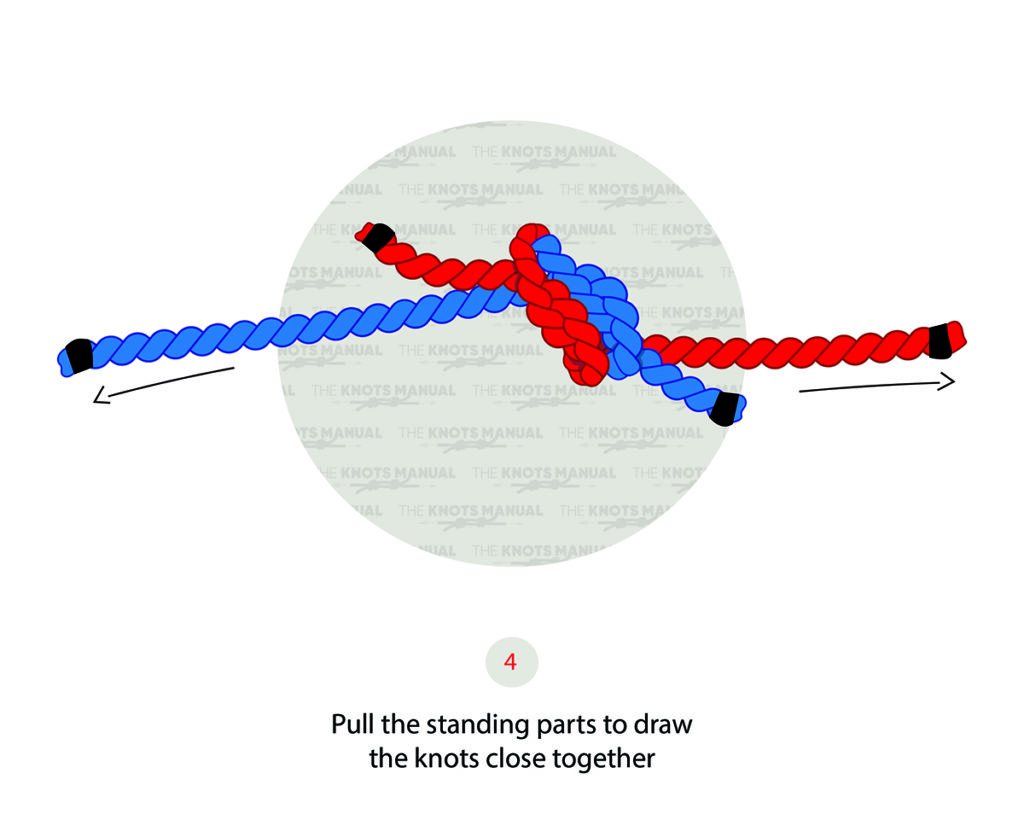
The Fisherman’s Knot is a bend that joins two ropes. It is a reliable knot used for securing a fishing line to a hook, swivel, or lure. A popular choice for anglers, this knot is easy to tie and provides a strong hold but may slip when used with braided lines or lines made of slippery materials.
To tie a Fisherman’s Knot, start by making a loop with one of the lines by passing the working end over and then underneath the standing end of the other line. Then, bring the working end through the created loop. Next, repeat the same step using the other line. Pull on the tag ends to tighten the individual knots, and then pull the standing parts to draw the knots close together to complete the knot.
2. Palomar Knot
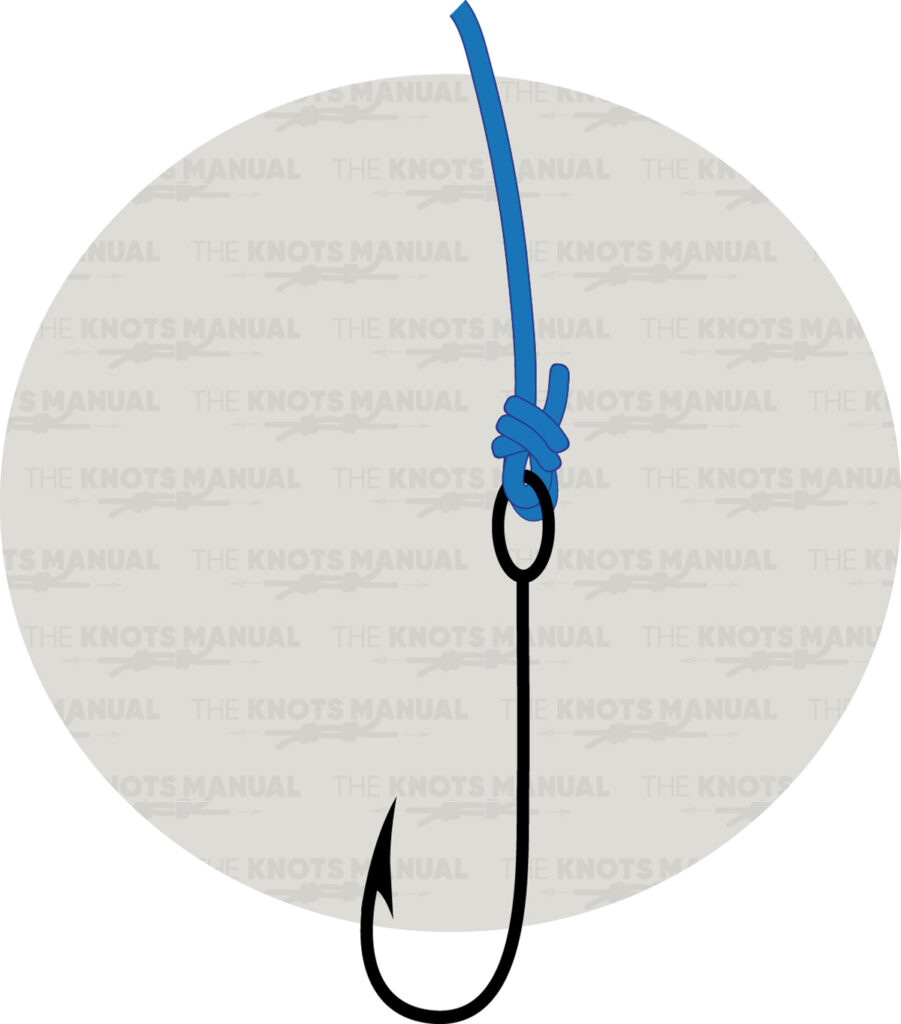
Known for maintaining nearly 100% of the fishing line’s original strength and a favorite among anglers, the Palomar Knot is a simple yet strong knot used to attach a fishing line to hooks, lures, swivels, and split rings. This knot is easy to tie and works exceptionally well with braided and monofilament lines.
Tying a Palomar Knot begins by creating a bight near the end of a fishing line. Pass the bight through the ring of the hook and behind the standing end. Wrap it around the standing end and bring it through the formed loop to make an Overhand Knot. Next, take the end of the bight, spread it open, and pass it over the hook, bringing it up. Then, pull the standing part to tighten the finished knot.
3. Australian Plait
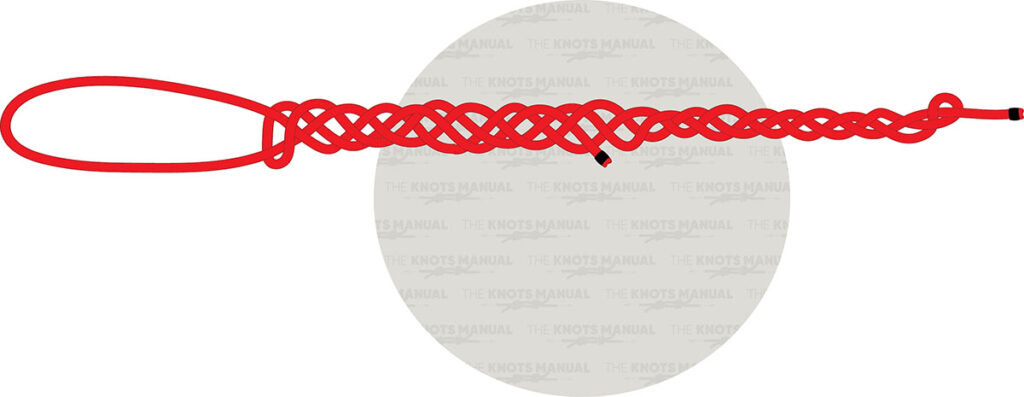
The Australian Plait is a powerful knot designed to create a strong double line. It is commonly used in big game fishing when extra strength is required. This knot distributes pressure evenly along the line, making it an excellent choice for heavy-duty fishing applications.
To tie an Australian Plait knot, form a loop by doubling up a line or rope that will be used to create a braid. Twist the loop and thread the tag end through the loop. Start wrapping the tag that is at the end around the main strands toward the back of the braid and then bring it back up the middle of the two strands. Be sure each braid is very tight.
After this, you will have three strands: two hanging tag ends and the loop. Twist the loop and thread the longest tag end through the loop to braid the two lines together. The shorter tag end should remain stagnant as the braid is moving away from it. Continue twisting the loop and pushing the long tag end into the loop every time. Ensure each twist is even to create a secure braid. Repeat the process with the other side of the loop, being sure that each time the line or rope makes a lap through the loop, the stagnant line is pulled tightly.
Once the braided section reaches the desired length, pull the doubled line through the loop and secure the knot by wrapping the loose ends of the lines around the base of the loop several times, pulling them tightly to hold everything in place. Trim any excess line for a clean knot.
4. Improved Albright Knot
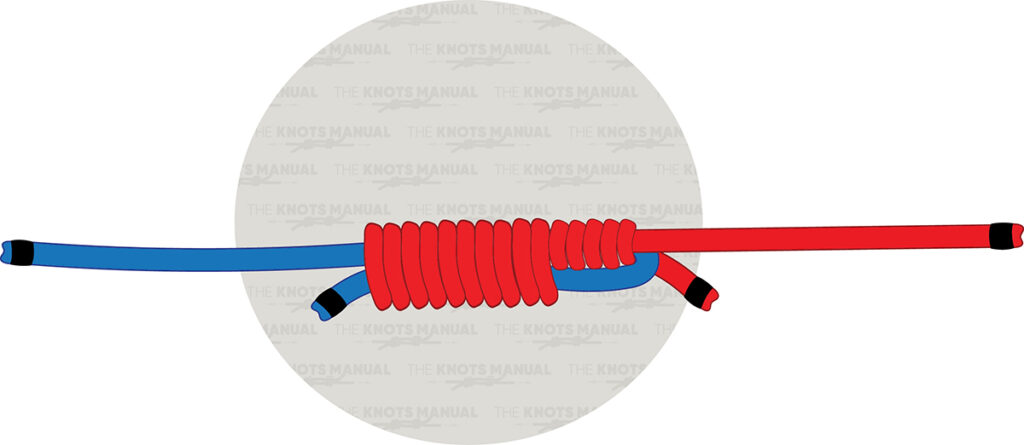
The Improved Albright Knot is ideal for connecting lines of different materials, such as monofilament to braided lines. An upgraded version of the Albright Knot, it offers extra security and strength. This knot is commonly used for saltwater fishing where line transitions are necessary.
When tying an Improved Albright Knot, start by creating a bight with a thicker line. Push the end of the thinner line through the loop of the bight, leaving several inches for the wraps. Next, wrap the thinner line around itself and the thicker line, going back toward the loop ten times. Continue wrapping around the thinner and thicker line five times, passing the end of the thinner line back through the loop and entering in the same direction. Pull both ends to tighten the knot and trim any excess line.
5. Easy Snell Knot
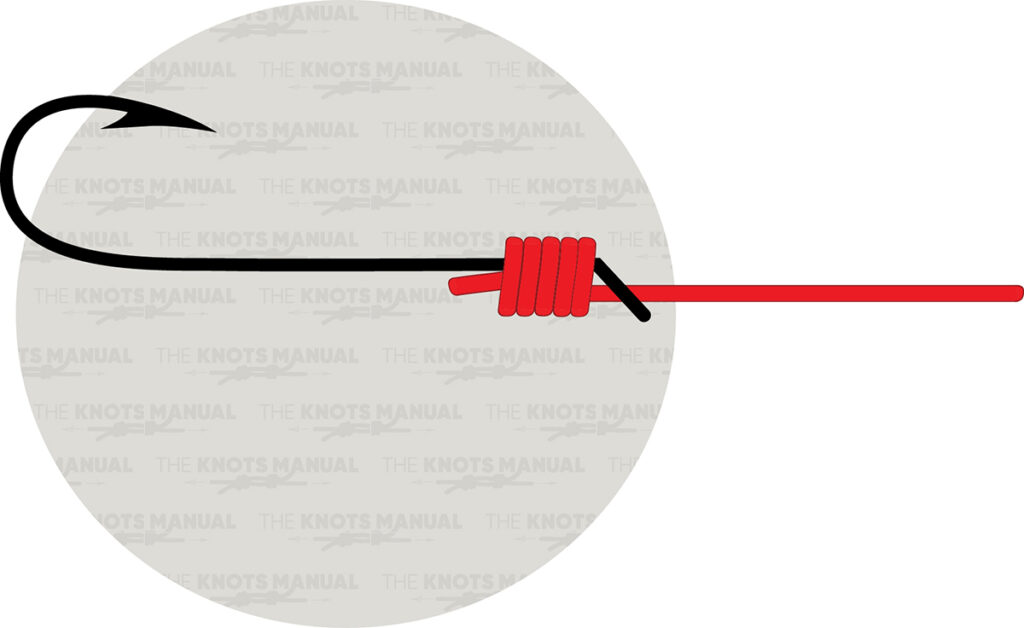
The Easy Snell Knot is a simple and effective way to attach a hook to a leader or mainline. It ensures a strong, straight pull, making it a favorite among anglers targeting big fish. This knot is commonly used for bait fishing, where hook positioning is crucial.
To tie an Easy Snell Knot, begin by holding the hook and line together and running the tag end through the eye of the hook, going toward the hook. Create a small loop and bring the tag end behind the hook shank. After that, wrap the end of the line around the hook shank five to seven times. Then, feed the tag back through the loop. Pull both ends to secure the knot.
6. FG Knot
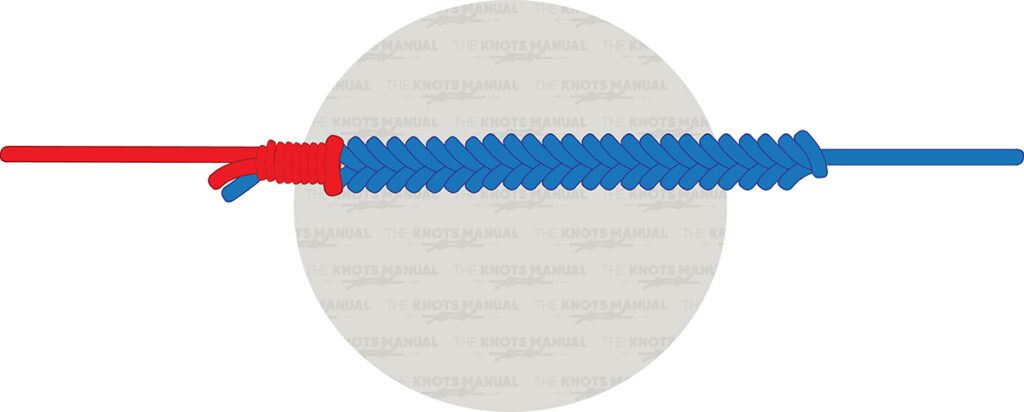
Popular for its slim profile and exceptional strength, the FG Knot is one of the strongest knots for connecting a braided line to a fluorocarbon or monofilament leader. Smoothly passing through rod guides with minimal resistance, it is ideal for finesse fishing. Though it takes some practice to master, its strength and durability make it a top choice for serious anglers.
Tying the FG Knot starts by folding the leader line to make a small loop and then threading the main line through the leader loop. Wrap the main line around both strands of the leader, repeating the wraps by alternating over and under 23 times. Tighten the knot by pulling both the leader line and the main line from both ends. Then, secure the knot by making a loop with the leader line and feeding the end into it.
7. Alberto Knot

The Alberto Knot is a compact and secure knot used to connect a leader to a mainline. It is especially useful for tying fluorocarbon leaders to braided lines. This knot is widely used in both freshwater and saltwater fishing due to its durability.
In order to tie an Alberto Knot, begin by doubling back a few inches of leader line to create a loop. Then thread the main line through the loop and wrap it around both strands of the leader about seven to ten times. Reverse direction and wrap back toward the loop with another seven to ten wraps. Finally, pull both ends to tighten the knot. Trim the tag ends to finish.
8. Haywire Twist

The Haywire Twist is essential for tying wire leaders, making it popular among saltwater anglers targeting toothy fish like mackerel and barracuda. With its strong, kink-resistant connection that holds up against aggressive strikes, this knot is a must-know for offshore fishing.
When tying the Haywire Twist knot, thread the wire through the eye of the hook or lure, leaving about four to six inches of excess wire for the twists. Then wrap the two wire ends together in tight loops for approximately three to four twists, ensuring the loops are consistent to prevent slippage. Next, wrap the tag end around the standing wire several times to secure the knot with barrel wraps. Bend the wire back sharply and rock back and forth to create a clean break of the tag end and prevent any sharp edges that could snag.
9. Seaguar Knot
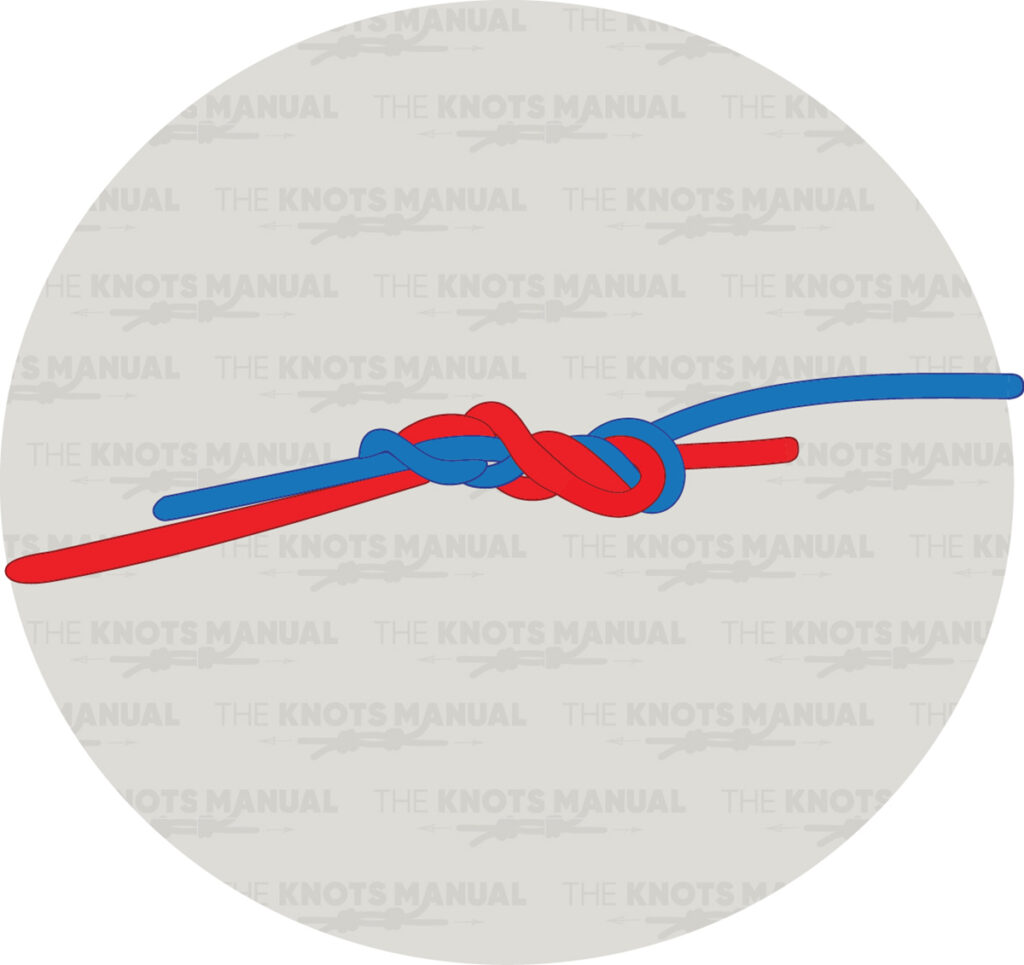
The Seaguar Knot is designed for connecting fluorocarbon leaders to the braided mainline. It provides exceptional knot strength while maintaining a smooth, low-profile connection. This knot is perfect for situations where stealth and strength are required.
To tie a Seaguar Knot, lay the mono and flour lines parallel and create a loop, holding the loops side-by-side. Make three counterclockwise twists and pass the tag ends of the line and leader through the loop. Lubricate the lines and pull all four ends to tighten the knot.
10. Pitzen Knot
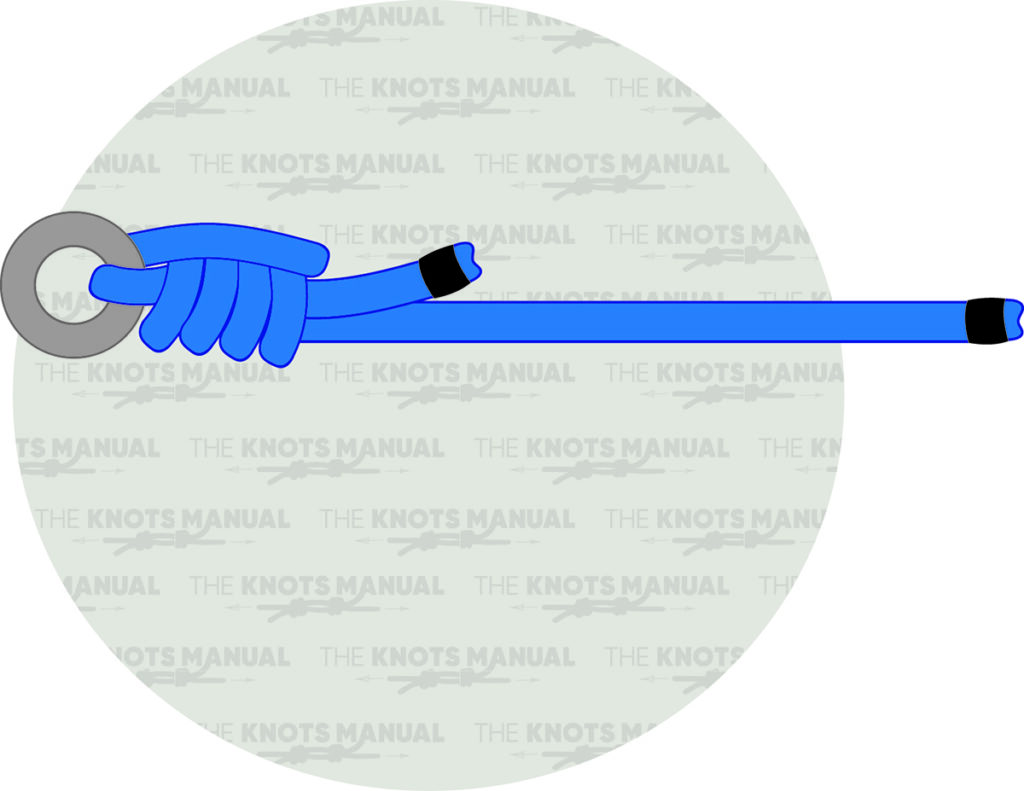
Also known as the 16-20 club and Eugene Bend, the Pitzen Knot is one of the strongest knots for securing a hook, lure, or swivel. It retains high knot strength and is easy to tie even with wet hands. Anglers use it for a variety of fishing techniques, including fly fishing.
Tying a Pitzen Knot starts by threading a line through the eye of a hook and then wrapping the tag under the standing part. Using your index finger, hold the line and bring the tag back down around the two parallel lines, creating four wraps heading back down to the eye. Next, pass the tag end back through the small loop held by your finger. Then slide the knot down toward the hook eye, being sure not to pull on the standing line. When the knot is in position at the hook, pull tight.
11. Orvis Tippet Knot
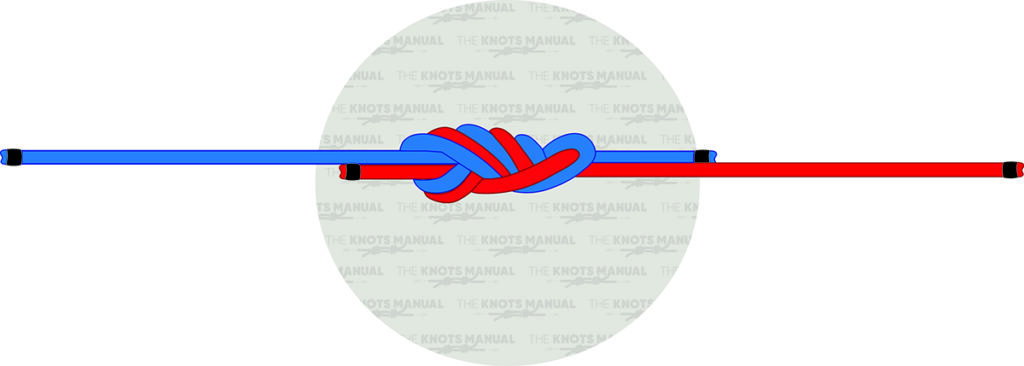
The Orvis Tippet Knot is a simple and effective knot for joining two lines of similar diameter. Known for its high strength and easy tying process, this knot is often used in fly fishing when connecting tippets to leaders.
To tie an Orvis Tippet Knot, place the leader and tippet alongside each other, ensuring there is approximately four to six inches of overlap. While holding the two lines with your thumb and index finger, bring the double lines back over to create a loop and pinch the loop. Next, twist both ends behind the doubled line and bring them above the double line. Then feed the tag end of the leader and tippet through the loop created in step two and repeat. Pull all the lines to tighten the knot and trim any excess tag ends.
12. Bristol Knot
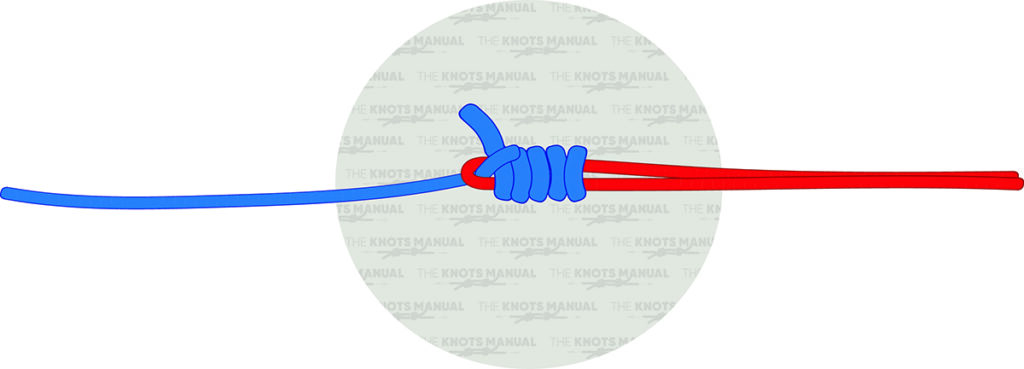
The Bristol Knot, also known as the No-Name Knot, is a strong connection used for joining a double line to a leader. It is commonly used in offshore and saltwater fishing for handling heavy loads. This knot maintains high breaking strength and is resistant to slippage.
In order to tie a Bristol Knot, first, use the class line to tie a bimini, keeping the loop very short. Pull the leader through the loop, and then holding your index finger around the leader to maintain the loop at the beginning of the knot, wrap the tag around the double line five to seven times. Next, pull the tag back to the start of the knot and bring it through the loop under the first turn and over the double line. Moisten the line with saliva and tighten it by pulling on both the standing part of the leader and the double line.
13. Double Davy Knot
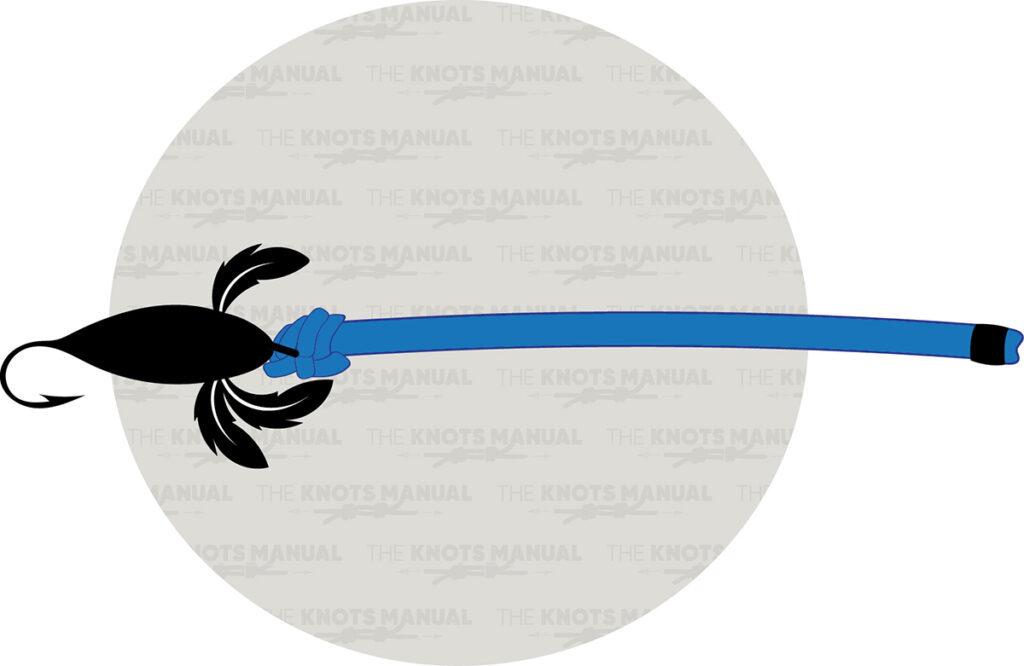
The Double Davy Knot is a quick and efficient knot used in fly fishing for securing small flies. An improved version of the standard Davy Knot, this knot provides extra security and is easy to tie while also holding up well under tension.
Tying a Double Davy Knot starts by threading three to four inches of leader or tippet through the hook eye in either direction, making sure the tag runs below the main line. Loosely form a simple Overhand Knot. Then bring the tag end back through the loop, ensuring the end passes between the Overhand Knot and the hook itself. Next, pass the tag end back through the loop on more time or just make a second wrap the same as the previous step in the same direction. Complete the knot by pulling on the tag end first to draw up the knot and then on the main line to set the knot.
14. Spider Hitch Knot

The Spider Hitch Knot creates a strong double line, making it useful for big-game fishing. It is easier to tie than the Bimini Twist while maintaining similar strength. Anglers use this knot when they need additional shock absorption for powerful fish.
To tie a Spider Hitch Knot, double over the length of a line and form a loop. Hold the loop between your forefinger and thumb. Then wrap the doubled line around your thumb five times. If using a braided line, wrap it 15 times. Then bring the end of the double line through the loop and pull gently. The wraps around your thumb will unravel as you pull to create the knot. Moisten the knot with saliva and pull from both directions to secure it.
15. Egg Loop Knot
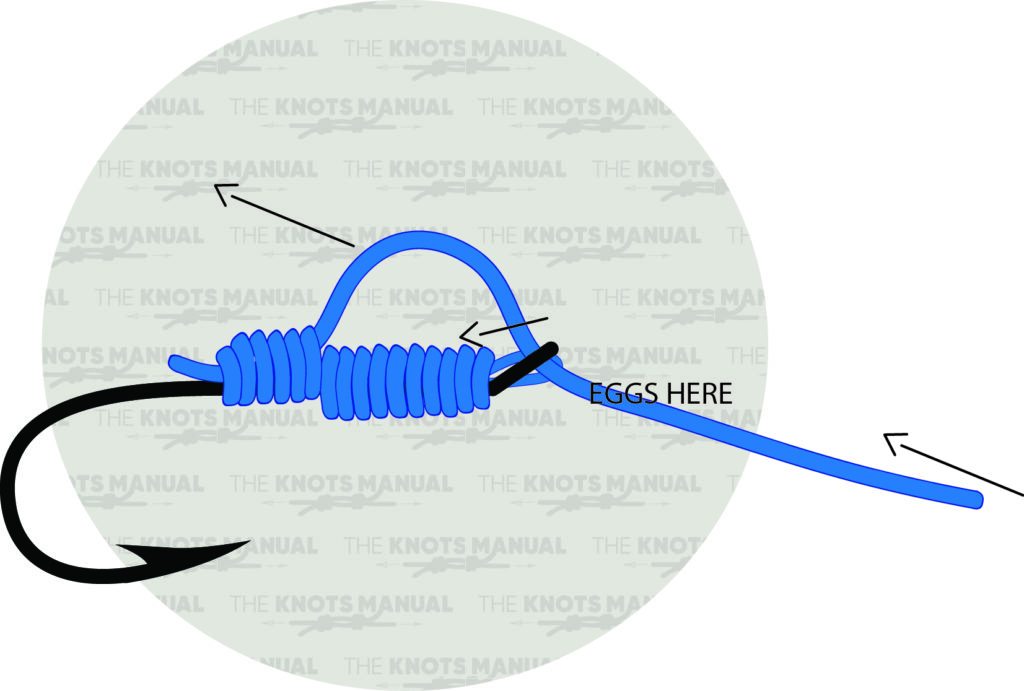
The Egg Loop Knot is widely used in salmon and steelhead fishing to secure bait on the hook. This knot is essential for anglers who fish with natural baits, as it provides a firm grip on roe and other soft baits, preventing them from slipping.
When tying an Egg Loop Knot, begin with about four feet of leader and pass one end through the hook eye to the bend in the hook. Hold it in place with your thumb and forefinger. Make 10-20 tight wraps with the longer line around the bend in the hook and the shorter line. Thread the long end through the hook to create a loop, and then make 10 wraps back toward the bend in the hook. Pull on the leader to tighten the knot and adjust the loop to the preferred size.
16. Knotless Knot
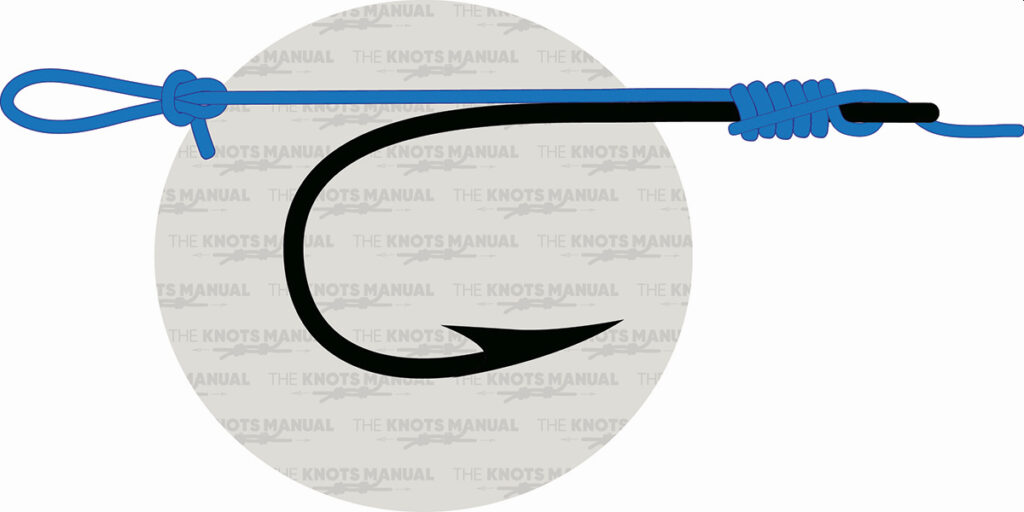
The Knotless Knot is a staple in carp fishing and is used to attach hair rigs. It provides a secure connection without the need for an actual knot at the hook eye. This knot ensures a natural bait presentation and is popular in specimen fishing.
In order to tie a Knotless Knot, start by tying a small loop at the end of your line to hold the bait. Feed the opposite end of the line through the hook’s eye hole and position the loop where you’d like it. Bring the line back over the shaft of the hook and wrap it around five to eight times.Then run the free end of the line over the wrapped section and through the eye hook. Hold the fixed loop in place and use the other hand to tighten the knot by pulling the free end. To reinforce the knot’s strength, you can add a drop of super glue.
17. Yucatan Knot
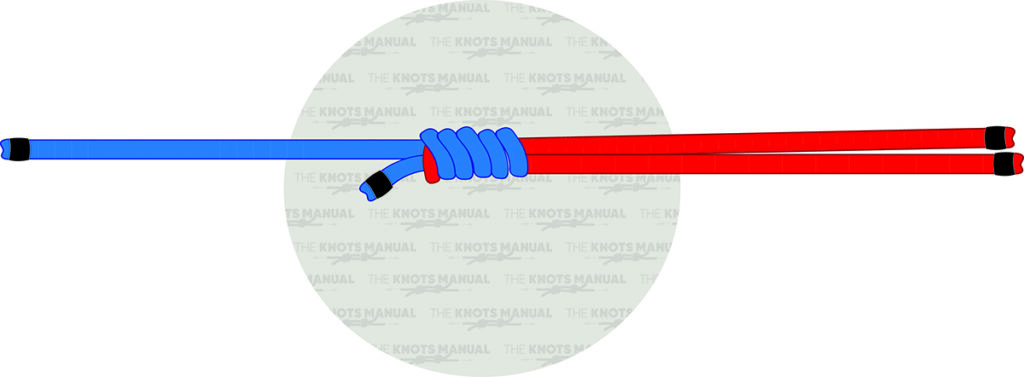
The Yucatan Knot is an excellent choice for connecting a doubled mainline to a leader. Often used in saltwater fishing, it is a strong and easy-to-tie knot for dealing with large, powerful fish. This knot is favored by offshore anglers for its high breaking strength and ease of tying.
To tie a Yucatan Knot, place the leader and doubled main line from the reel, parallel to one another. If using fluorocarbon or mono line, wrap the doubled line around the leader four to six times, but for braided line, wrap it 10-15 times. Then insert the end of the leader line through the loop on the doubled main line, and pull both the leader and doubled main line in opposite directions to secure the knot.
18. Offshore Swivel Knot
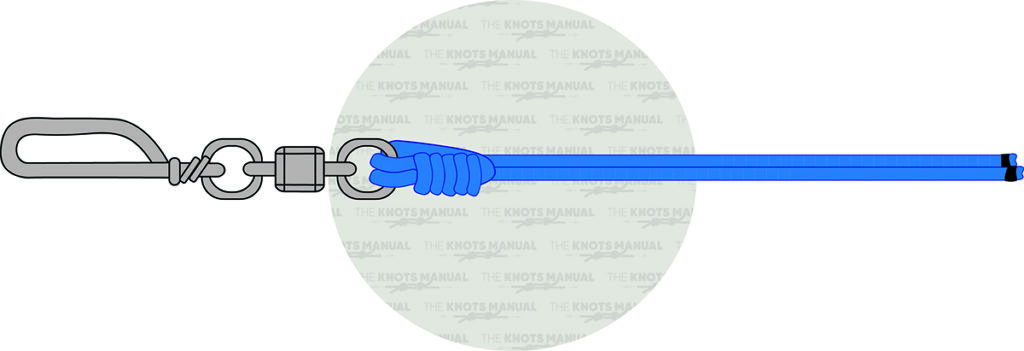
A popular choice for offshore fishing, where reliability is critical, the Offshore Swivel Knot is used to secure a swivel to a double line. This knot provides a strong, slip-resistant connection that holds up under extreme pressure.
Tying an Offshore Swivel Knot begins by first folding the fishing line in half and passing it through the eye of the swivel. Fold the bight over the fishing line and spread the formed loop out in the middle. Next, bring the swivel through the center of the loop three to seven times. Before tightening the knot, lubricate it with saliva or water. Then, carefully slide the knot closer to the swivel to secure the knot.
19. Centauri Knot
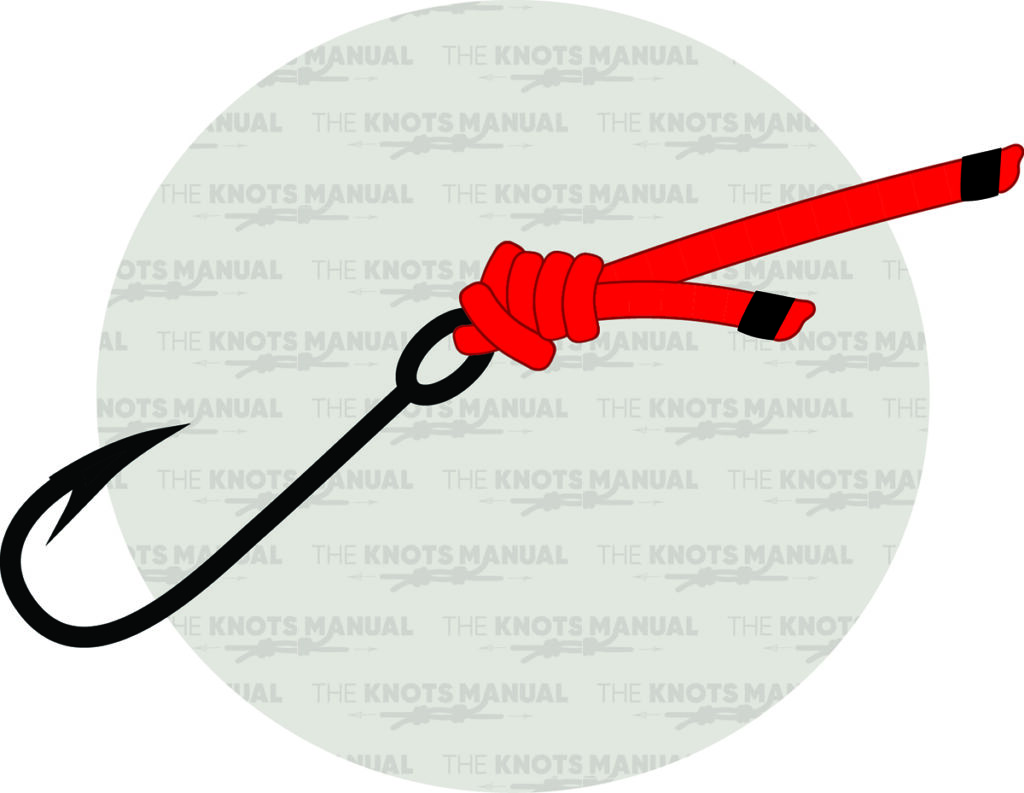
The Centauri Knot is a versatile and strong knot used for attaching terminal tackle. It is easy to tie and provides excellent breaking strength. This knot is ideal for various fishing applications, including bottom fishing and trolling.
To tie the Centauri Knot, pass the tag end of the fishing line through the eye of the hook, lure, or swivel. Wrap it around the long end of the line once in a clockwise direction. Make another turn in the same direction, and then do a third turn around the long end of the line. Bring the end through all three turns. Then, lubricate the knot and tighten it by holding the loop with one hand and pulling both ends of the line in opposite directions.
20. Bobber Stopper Knot
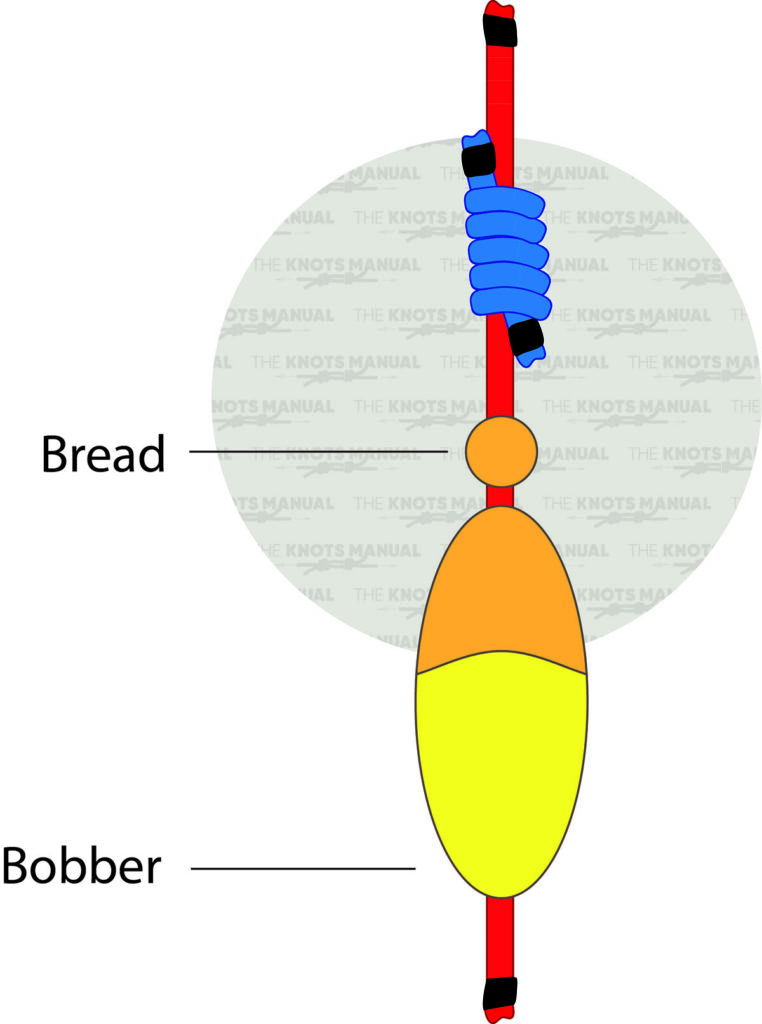
The Bobber Stopper Knot is used to create an adjustable stop on the fishing line for slip bobbers. Ensuring precise depth control and can easily be moved up or down, this knot is essential for freshwater anglers who use float fishing techniques.
When tying a Bobber Stopper Knot, place one end of a fishing line next to another (main) line. Make five turns around both of them, starting from the top to the bottom. Then, pass the other end through the bottom loop to lock it in place. Lubricate and then tighten the knot by pulling both ends of the fishing line, ensuring the tension is right so it doesn’t slide easily but can be adjusted as needed. Cut off the excess tag ends to complete the knot.
21. Uni Knot
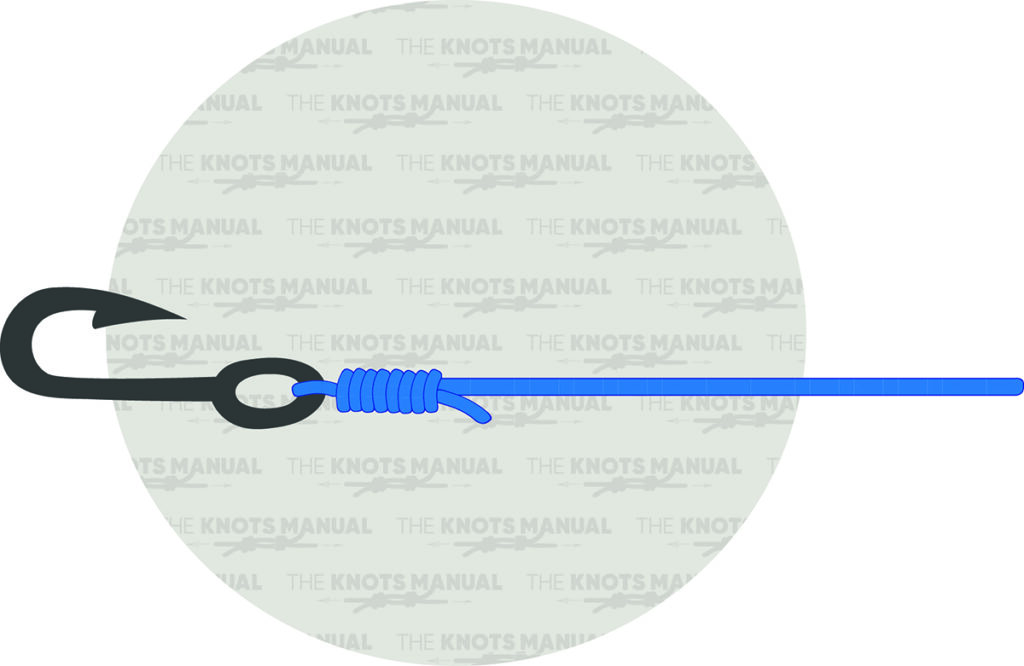
A favorite among both beginner and experienced anglers, the Uni Knot is a versatile and reliable knot that creates a self-tightening loop at the end of a fishing line. This knot also works well for joining two lines together, providing a simple knot that is easy to tie yet effective at maintaining a strong hold for various fishing applications.
In order to tie a Uni Knot, start by passing the end of the line through the eye of the hook and place it parallel to the standing line. Make a loop and wrap the tag end around both parallel lines three to eight times. On the last turn, keep the tag end facing outwards. Tighten and complete the knot by pulling the tag and standing ends.
22. Fish N Fool Knot
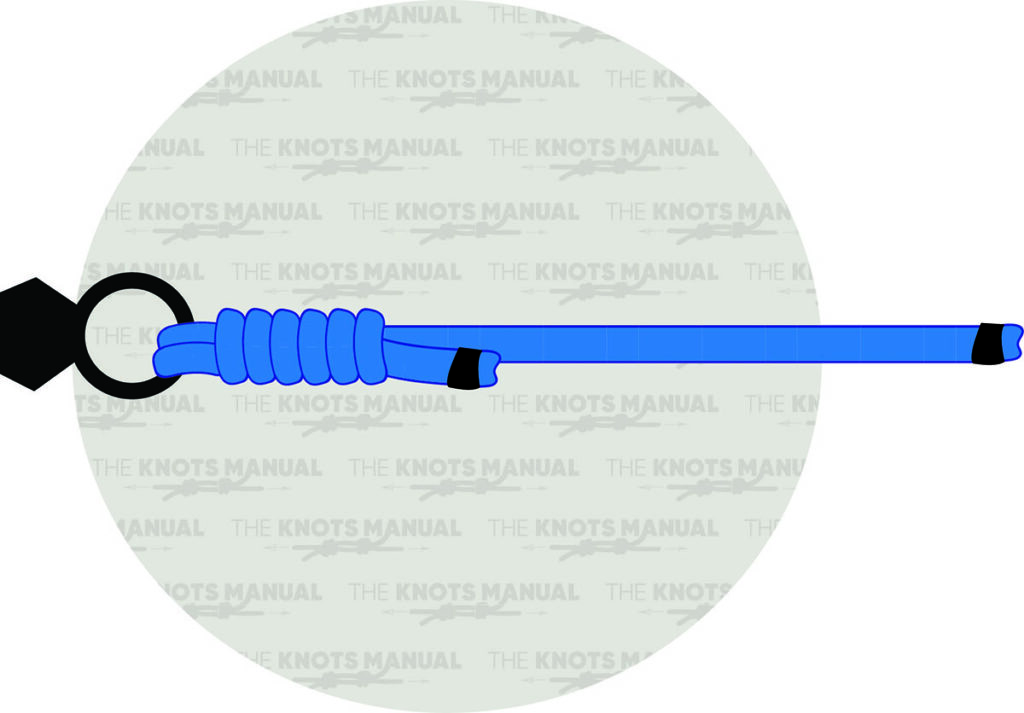
The Fish N Fool Knot is a strong and reliable knot for securing a hook or lure to the line. It is an improved version of the Uni Knot and retains high strength. Anglers prefer this knot for both monofilament and braided lines.
To tie a Fish N Fool Knot, pass the end of the fishing line through the eye of a hook or swivel two times. Place the end parallel to the standing line and form a loop in front of it. Next, wrap the end five to six times around both parallel strands, and then lubricate and tighten the knot. Pull the knot close to the eye of the hook by pulling on the standing end. Cut the tag end short to finish the knot.
23. Double Fisherman’s Knot
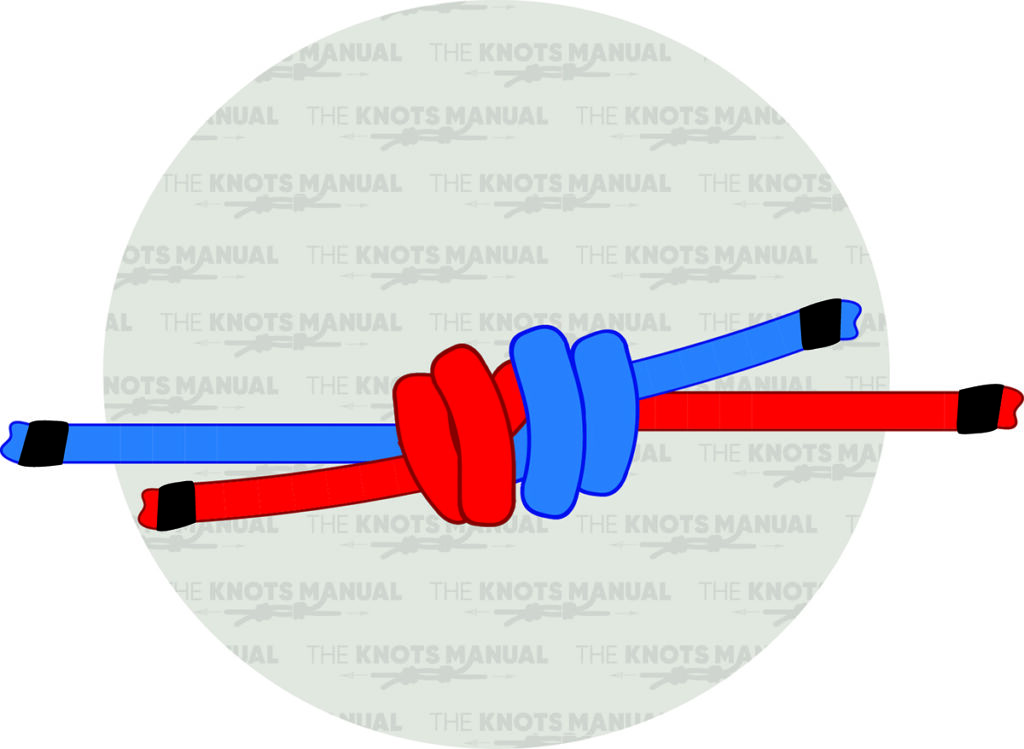
The Double Fisherman’s Knot is a highly secure knot ideal for joining two lines together, commonly used in both fishing and climbing. Known for its strength and reliability, it tightens under tension, making it nearly impossible to unravel. While it excels with similar-diameter lines, its bulkiness can be a drawback for certain fishing applications.
Tying a Double Fisherman’s Knot begins by placing the working ends of both ropes or lines next to each other. Wrap the first rope around the second one two times, starting from the furthest end and going closer. Then, bring the working end through these two loops and tighten the knot. Create an identical knot in the other direction with the other line. Pull the standing ends of both ropes to tighten the knot.
24. Double Palomar Knot

The Double Palomar Knot is a strong and reliable knot used to secure hooks, lures, and swivels. It is an improved version of the standard Palomar Knot, offering extra strength. Anglers favor this knot because it maintains nearly 100% of the line’s strength and is easy to tie with braided or monofilament lines.
To tie a Double Palomar Knot, create a bight and pass it through the eye of a hook. Bring the bight behind the standing part, and wrap it around the loop. Push the bight through the loop again. Then, open the loop and pass it around the hook. Next, bring the loop up and hold the ends and hook while pulling the standing end to tighten the knot.
25. San Diego Jam Knot
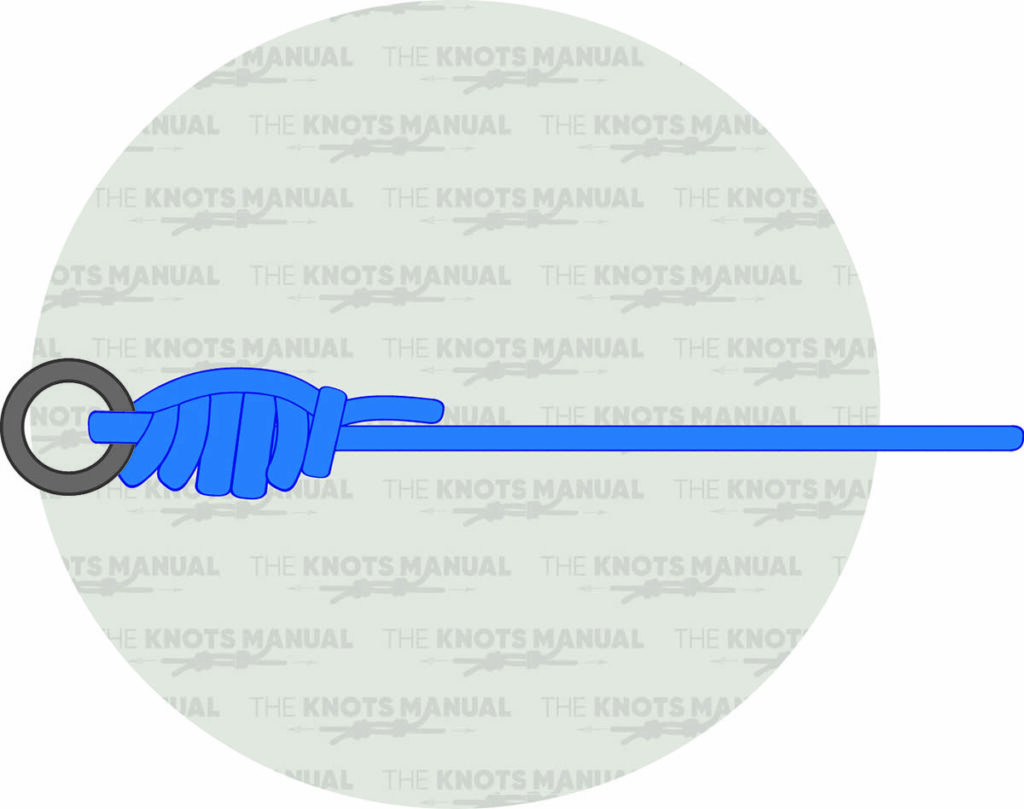
Originally popular among tuna fishermen, the San Diego Jam Knot is a reliable and strong knot for tying hooks, lures, and swivels. It works exceptionally well with heavy fluorocarbon and monofilament lines. Many saltwater anglers prefer this knot because of its high breaking strength under pressure.
When tying a San Diego Jam Knot, start by passing the tag end through the eye of the hook and then place it parallel to the standing end. Complete seven turns around both lines. After the first turn, put your index finger in there to keep it in place. Then, on the final turn, bring the tag end between both lines. Next, pass the tag end through the loop formed in the first turn and tighten.
26. Perfection Loop Knot
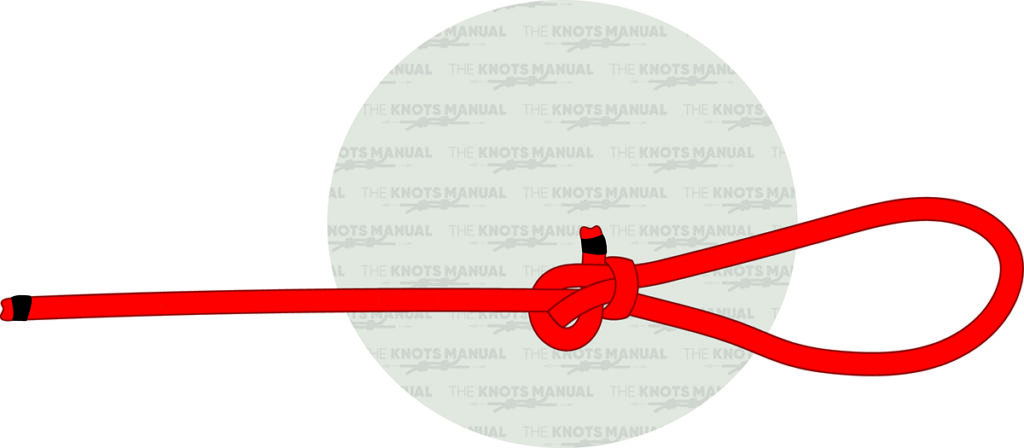
The Perfection Loop Knot is commonly used to create a loop at the end of a leader for quick and easy rig changes. It maintains nearly 100% of the line’s original strength and is ideal for fly fishing and bottom fishing rigs. This knot is favored by anglers who need a reliable loop for easy lure or leader swaps.
In order to tie a Perfection Loop Knot, form a loop near the end of the fishing line and pass the working end underneath the standing end. Create another loop of similar size and go behind the standing line again. Pass the working end between the two formed loops, and then bring the second loop through the first one. Pull the end of the formed loop to tighten and complete the knot.
27. Surgeon’s Knot
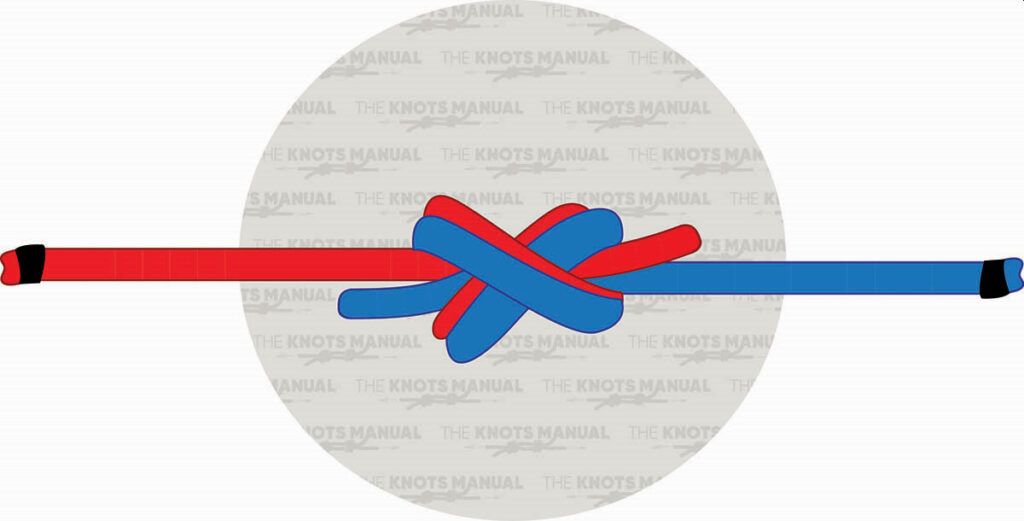
The Surgeon’s Knot is a simple and strong knot used to join two lines of similar or different diameters. It is especially popular for tying leaders to the main fishing line because of its reliability and ease of tying. This knot maintains high strength and works well in both freshwater and saltwater fishing applications.
To tie a Surgeon’s Knot, place both fishing lines or ropes next to each other, with the ends overlapping in opposite directions. The shortest line (leader or tippet) should be placed on the right side. Make a loop with both lines, and pass the shortest end through the loop two times. Lubricate and pull the ends to tighten the finished knot.
28. Rapala Knot
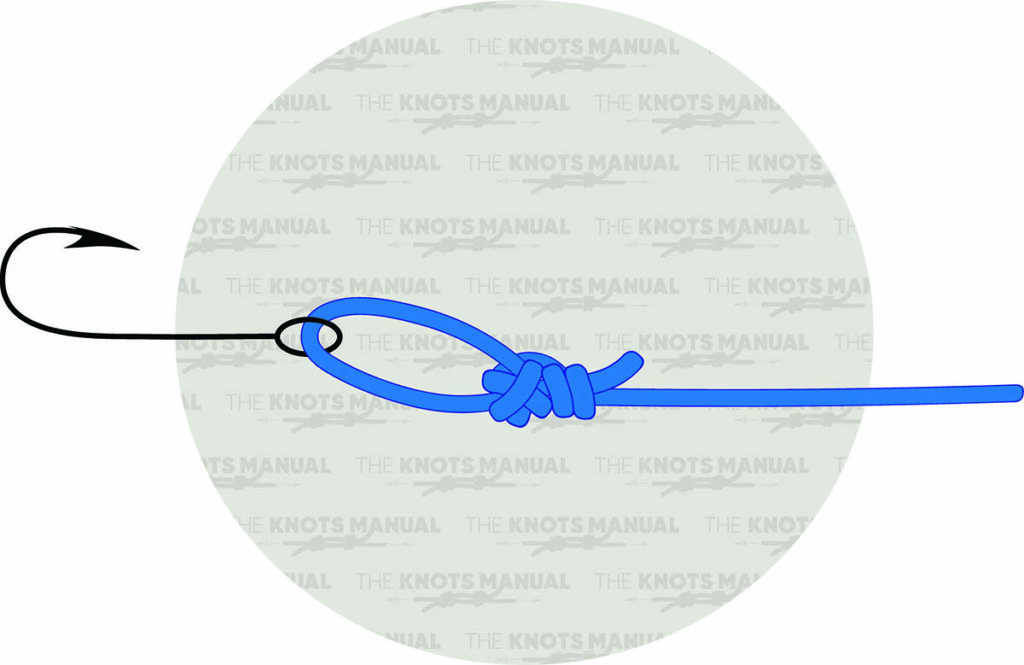
The Rapala Knot is a non-slip loop knot designed to give lures more natural movement in the water. It is strong and secure while allowing the lure to swim freely, making it ideal for artificial bait presentations. This knot is especially popular among anglers targeting predatory fish that respond to lifelike lure action.
Tying a Rapala Knot begins by creating a loose Overhand Knot near the end of the line and passing the tag end through the eye of the knot and back through the Overhand Knot. Next, wrap the tag end around the standing end three times. Then bring it back through the Overhand Knot. Finally, tuck the tag end through the loop that is formed and under itself.
29. Improved Clinch Knot
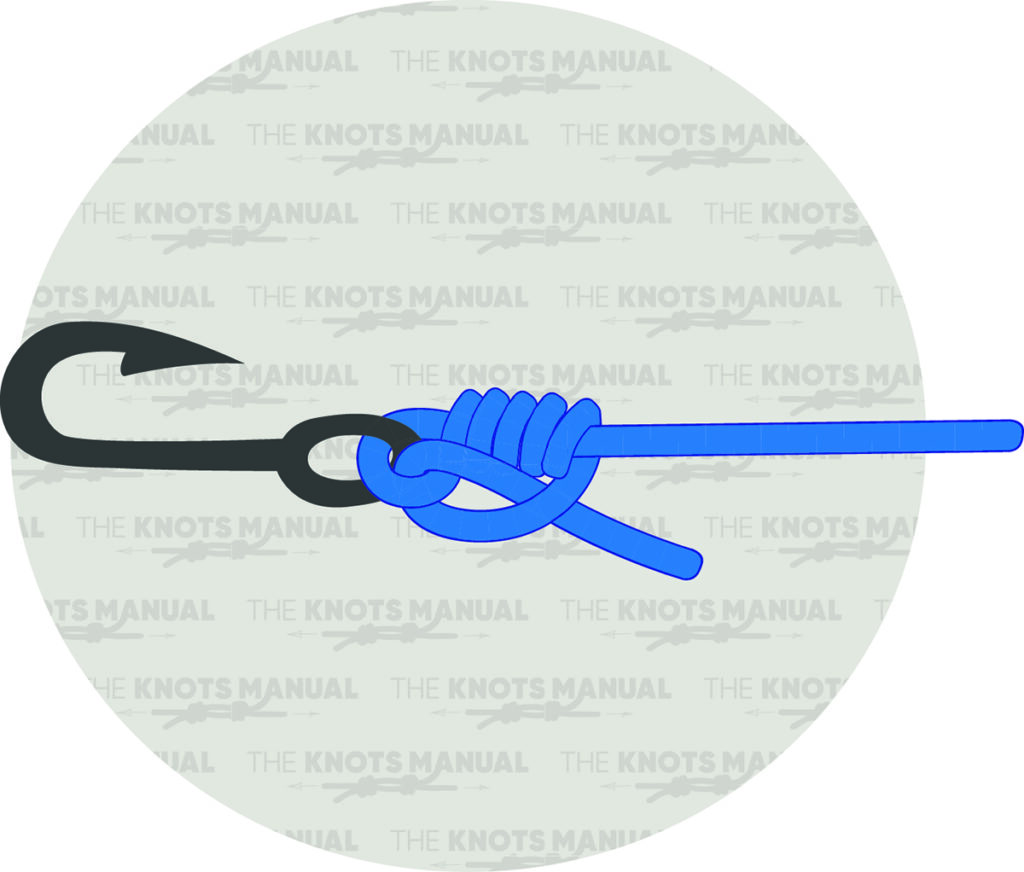
Popular for securing a fishing line to a hook, lure, or swivel, the Improved Clinch Knot is reliable and strong. The extra tuck through the final loop enhances the knot’s strength and prevents slippage. This knot is widely used by anglers because it is easy to tie and works well with monofilament and fluorocarbon lines.
To tie an Improved Clinch Knot, first, pass the end of the line through the eye of the hook and start wrapping it around the standing end. Complete five full turns around the standing end, and then pass the end through the loop near the eye of the hook. Then, pass the end under itself and tighten the knot.
30. Trilene Knot
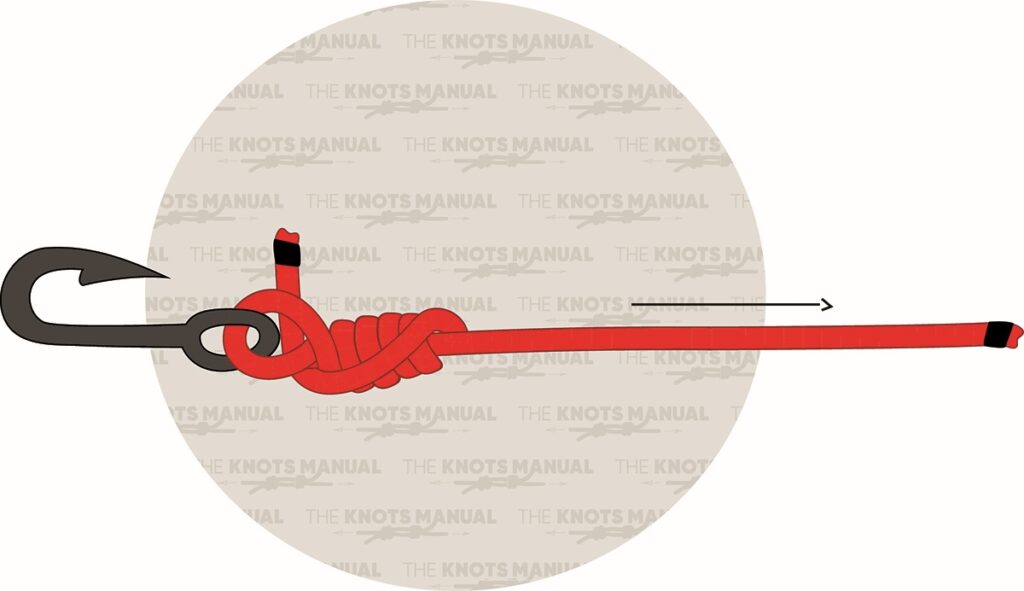
The Trilene Knot is a strong and reliable knot designed specifically for securing monofilament or fluorocarbon lines to hooks and lures. By threading the line through the eye of the hook twice before wrapping it around itself, this knot provides extra friction and holding power. Anglers favor it for its excellent breaking strength and resistance to slippage, making it ideal for a variety of fishing applications.
When tying a Trilene Knot, start by passing the working end of the fishing line through the hook twice, keeping it loose enough to pass a line through it. Wrap the working end of the fishing line around the standing end four times. Do another half-turn, and then pass the working end through the two loops created in the first step. Submerge the knot in water or saliva, and tighten the knot, being sure to cut off the excess end.
31. Nail Knot
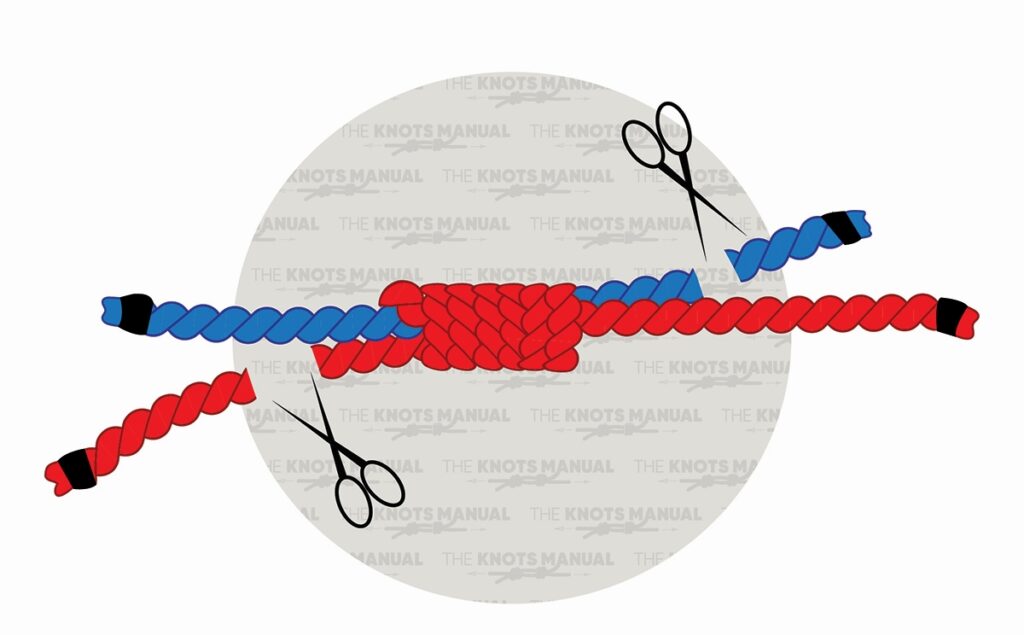
The Nail Knot is an essential knot for fly fishing, commonly used to attach a leader to a fly line. By wrapping the leader around both the fly line and a guiding nail or tube, it creates a compact and streamlined connection. Known for its smooth profile, this knot allows for easy casting and seamless passage through rod guides.
In order to tie a Nail Knot, lay your chosen tying tool against the end of your fly line. Set the butt end of your leader against the fly line and tool, leaving 10-12 inches of the working end to tie the knot. Next, working left to right, wrap the leader around the fly line and tying tool five to six times. Then, pass the working end of the leader through the hollow opening of your tool, and pull the leader’s working end to tighten the tool’s knot. Remove the tool and tighten the coils by pulling the ends of the leader. Finally, trim the working end of the leader close to the knot.
32. Arbor Knot
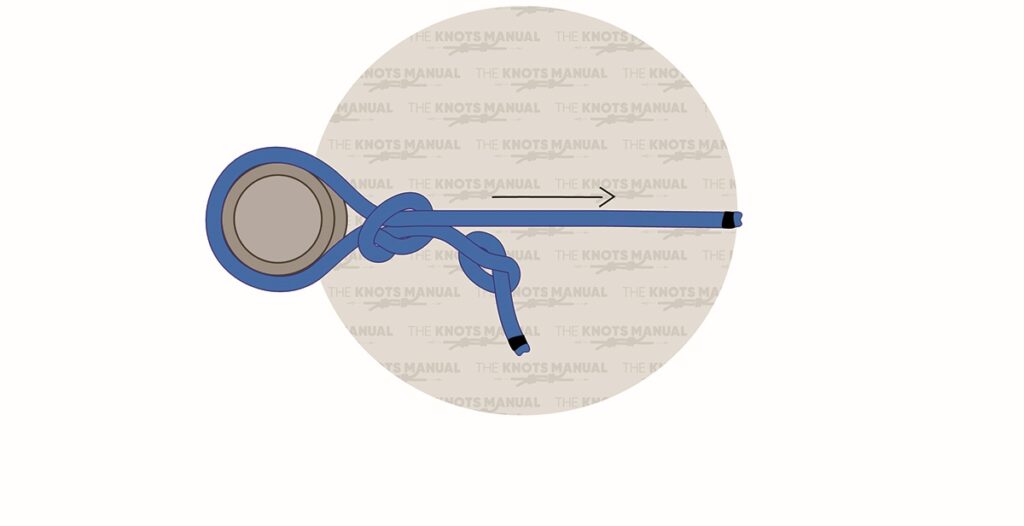
The Arbor Knot is a simple yet effective knot for securing a fishing line to the spool of a reel. By tightening around the spool with a basic overhand knot backed up by a second knot, it prevents slippage during retrieval. This knot is essential for ensuring a strong and reliable connection when spooling new line.
To tie an Arbor Knot, wrap the fishing line around the arbor. Form a loop around the rope’s standing part. Pass the working tag end through the loop, and pull on the working tag and standing ends to tighten the knot. Loop the working tag end around itself. Then, pass the working tag end through the loop to tighten it. Pull the working tag end tight to complete the knot and jam the second knot to the first, securing both knots to the arbor.
